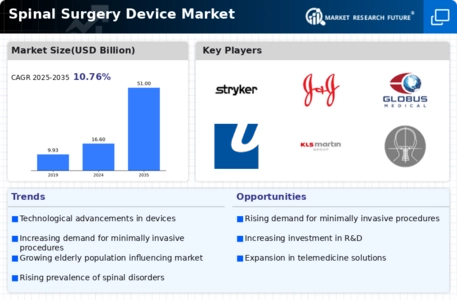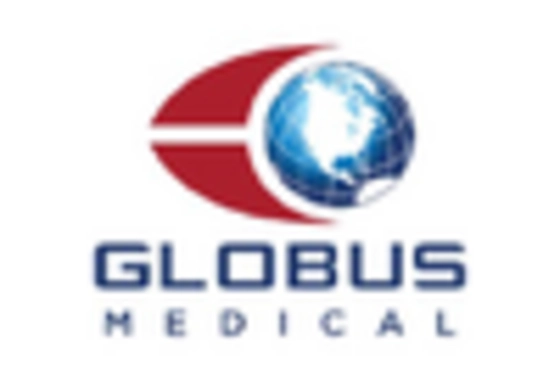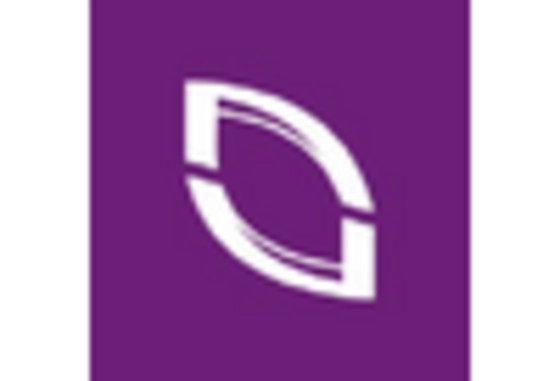Increasing Healthcare Expenditure
The rise in healthcare expenditure across various regions is significantly influencing the Spinal Surgery Device Market. As governments and private sectors allocate more funds towards healthcare, there is a corresponding increase in the availability of advanced surgical devices. This trend is particularly evident in countries with robust healthcare systems, where investments in medical technology are prioritized. Enhanced funding allows for the procurement of state-of-the-art spinal surgery devices, which can lead to improved surgical outcomes and patient satisfaction. Consequently, the Spinal Surgery Device Market is poised for growth, as higher healthcare spending correlates with increased demand for innovative surgical solutions.
Rising Incidence of Spinal Disorders
The increasing prevalence of spinal disorders, such as herniated discs and spinal stenosis, is a primary driver of the Spinal Surgery Device Market. According to recent data, spinal disorders affect millions of individuals worldwide, leading to a heightened demand for surgical interventions. This trend is further exacerbated by an aging population, as older adults are more susceptible to degenerative spinal conditions. The need for effective treatment options propels the market forward, as healthcare providers seek innovative devices to enhance surgical outcomes. As the incidence of spinal disorders continues to rise, the Spinal Surgery Device Market is likely to experience substantial growth, with projections indicating a compound annual growth rate that reflects the urgency for advanced surgical solutions.
Technological Advancements in Surgical Devices
Technological innovations play a crucial role in shaping the Spinal Surgery Device Market. The integration of robotics, navigation systems, and imaging technologies has revolutionized spinal surgery, enabling more precise and less invasive procedures. For instance, the adoption of robotic-assisted surgery has shown to reduce recovery times and improve patient outcomes. Furthermore, advancements in materials and design have led to the development of implants that are more durable and biocompatible. As these technologies continue to evolve, they are expected to drive the demand for new surgical devices, thereby expanding the Spinal Surgery Device Market. The ongoing research and development efforts in this field suggest a promising future for both manufacturers and healthcare providers.
Rising Awareness and Education on Spinal Health
The growing awareness and education regarding spinal health are contributing to the expansion of the Spinal Surgery Device Market. Public health campaigns and educational initiatives have increased knowledge about spinal disorders and the importance of early intervention. As individuals become more informed about their spinal health, they are more likely to seek medical advice and treatment options, including surgical interventions. This heightened awareness is driving demand for effective spinal surgery devices, as patients actively pursue solutions for their conditions. Consequently, the Spinal Surgery Device Market is likely to benefit from this trend, as increased patient engagement leads to higher rates of surgical procedures.
Growing Demand for Minimally Invasive Procedures
The shift towards minimally invasive surgical techniques is a significant driver of the Spinal Surgery Device Market. Patients increasingly prefer procedures that offer reduced recovery times and lower risks of complications. Minimally invasive spinal surgeries, such as endoscopic discectomy, have gained popularity due to their effectiveness and patient-centric benefits. This trend is supported by clinical evidence demonstrating that such procedures can lead to quicker rehabilitation and less postoperative pain. As more healthcare providers adopt these techniques, the demand for specialized spinal surgery devices tailored for minimally invasive applications is expected to rise, further propelling the Spinal Surgery Device Market.


















Leave a Comment